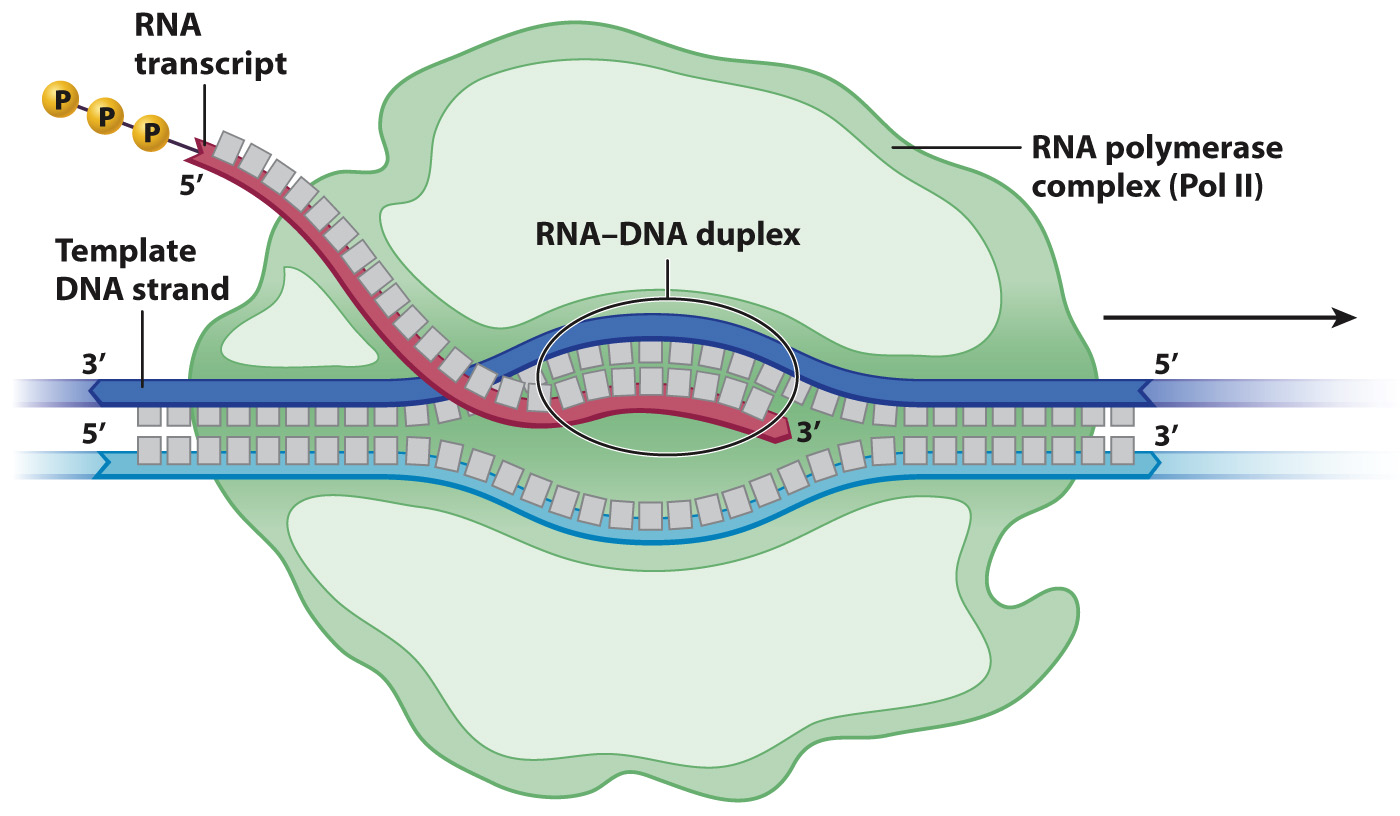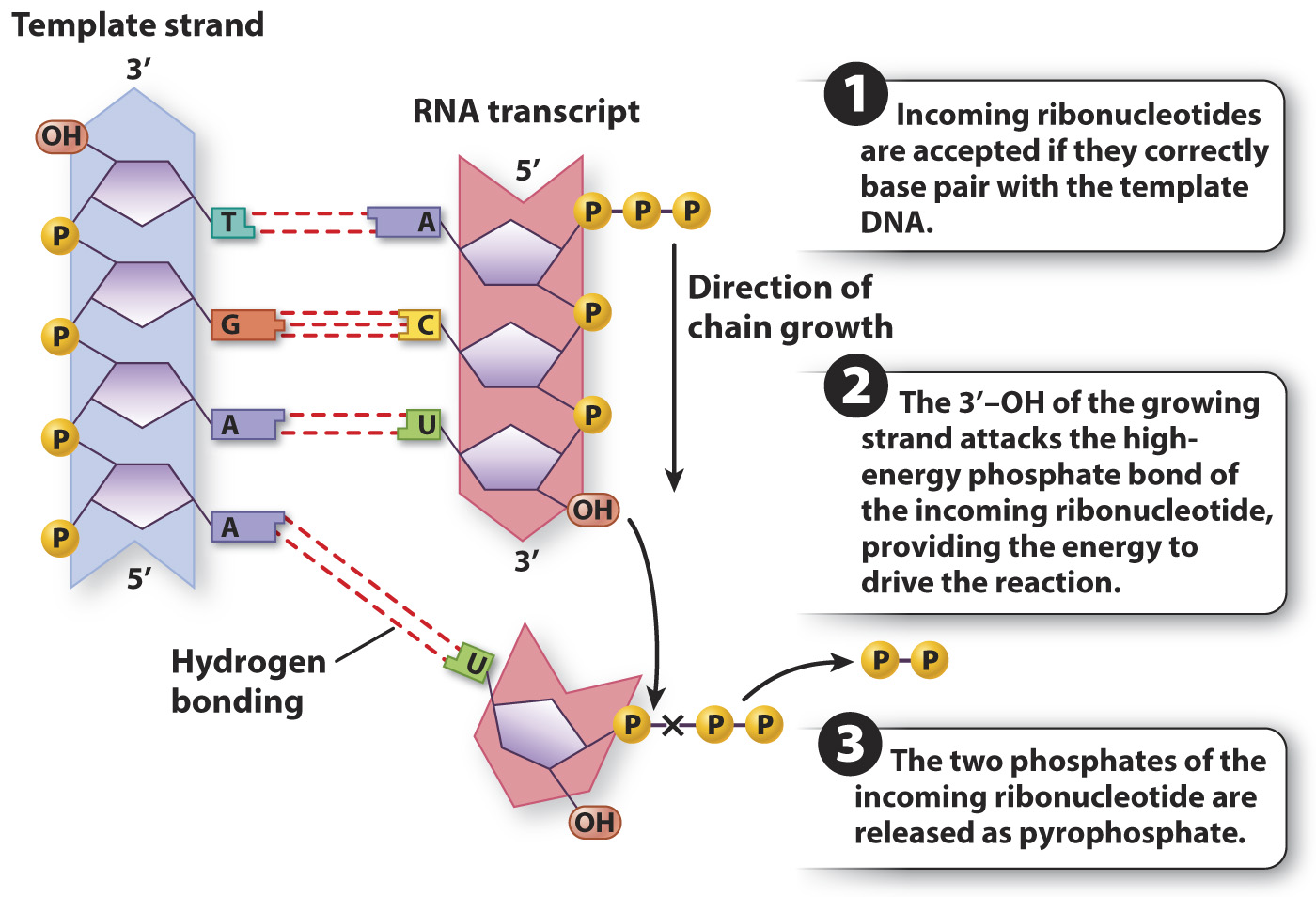RNA polymerase adds successive nucleotides to the 3′ end of the transcript.
Once transcriptional initiation takes place, successive ribonucleotides are added to grow the transcript. This step is known as elongation. Transcription takes place in a sort of bubble in which the strands of the DNA duplex are separated and the growing end of the RNA transcript is paired with the template strand, creating an RNA–

Details of the polymerization reaction are shown in Fig. 3.18. The incoming ribonucleoside triphosphate, shown at the bottom right, is accepted by the RNA polymerase only if it undergoes proper base pairing with the base in the template DNA strand. In Fig. 3.18, there is a proper match because U pairs with A. At this point, the RNA polymerase orients the oxygen in the hydroxyl group at the 3′ end of the growing strand into a position from which it can attack the innermost phosphate of the triphosphate of the incoming ribonucleoside, competing for the covalent bond. The bond connecting the innermost phosphate to the next is a high-

The polymerization reaction releases a phosphate–
Quick Check 3 What is the consequence for a growing RNA transcript if an abnormal nucleotide with a 3′ H is incorporated rather than a 3′ OH? How about a 2′ H rather than a 2′ OH?
Quick Check 3 Answer
The incorporation of a nucleotide with a 3′ H rather than a 3′ OH will stop subsequent elongation because the 3′ OH is necessary to attack the high energy phosphate bond of the incoming nucleoside triphosphate. The incorporation of a nucleotide with a 2′ H rather than a 2′ OH will have no effect on elongation, as this group is not involved in the polymerization reaction.